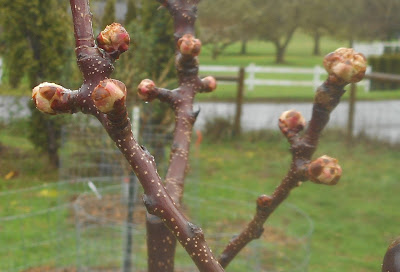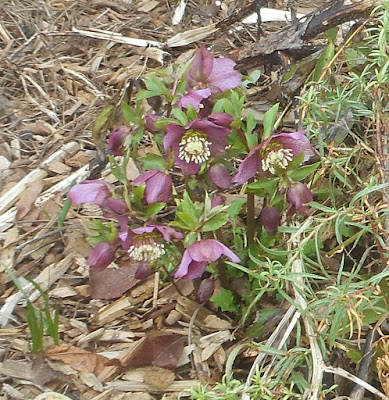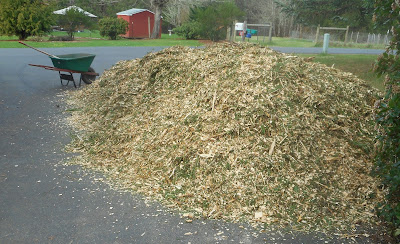It might seem strange to write an entire book about potatoes, but
there are several out there, and websites such as "
Potato History", "
History of the potato", "
How the potato changed world history", and many more. In past books, I read about the massive,
transformative effect that transporting potatoes from the Andes where
they originated, to Europe and China, had on human nutrition and
populations. This book is more about growing potatoes, which also deserves a book
The Complete Book of Potatoes. by de Jong, Sieczka, de Jong. 2011. Timber Press, Portland OR.
I got the book at my local library, Fort Vancouver Library in Vancouver, WA..
In
other books - I forget which - I've read that per acre, potatoes give
more calories and nutrition than any other plant, including rice, corn,
and wheat. That difference is what allowed population explosions among
the peasantry in China and Europe. And monoculture, of just one potato
variety in Ireland, was what lead to total dependence on an agricultural
house of cards, leading to disease susceptibility and famine.
Reading
the book "
The Complete Book of Potatoes" resulted learning in a
number of things about growing potatoes, I did not know, such as - in no particular order

Each cultivar has its own
tuber dormancy period, which has a major effect on how long they can be stored. Dormancy can be 4 weeks, to more than 3 months. Growing types with long dormancy period would be good for keeping potatoes. Growing types with shorter dormancy period would be better for fresh use where storage isn't important.
Yukon Gold and
Burbank Russet have long dormancy and good storability.
Day length has a big effect on what variety grows and produces, where.
Potatoes remove a lot of
nitrogen and potassium from the soil, so need fertile conditions. However, too much nitrogen, or late nitrogen, can lead to poor quality potatoes. Note that Pacific Northwest soils, west of the Cascade Mountains, are often verynhigh in potassium.
Emerging
potato sprouts can tolerate chill, 28F ro 32F.
Soil at planting temperature should be at least 45F.

For early harvest, plant early green sprouted potatoes, and use plastic tunnels to keep them warm.
Soil pH under 5.5 pretty much prevents scab. My soil is acidic, in the 5.03 to 5.5 range.
More nutrients are available at pH 6 to 7, but that promotes scab.
Scab should not be a problem at pH above 7.
French Fries were probably developed in Belgium, not France. Potato Chips, however, are an American Invention.
Potato
species originate in a wide area of South and Central America, Peru,
Bolivia, Argentina, Mexico, Uruguay, and Paraguay, and south Brazil. It
is thought the wild tuber bearing species actually originated in Mexico
- I thought it was Peru. The most primitive variety is epiphytic -
grows in trees.
I
think this book was very useful and will have an effect on my
gardening. I am better prepared as to cultivar selection, growing,
harvesting, and storing this useful and delicious garden crop. The book also discusses many potato cultuvars, organic and conventional methods, hilling, mulch, and other aspects of growing potatoes.
Based on the information from this book, my planting of sprouted potatoes might not turn out. It's OK, there was no other purpose for them, and maybe they will do better than expected.
Image Attribution:
(1)
By Henry G. Gilbert Nursery and Seed Trade Catalog Collection.; Peter
Henderson & Co. [CC BY 2.0
(http://creativecommons.org/licenses/by/2.0) or Public domain], via
Wikimedia Commons. Date 1872
(2)
By Wiley, Harvey Washington, 1844-1930; United States. Division of
Chemistry; United States. Department of Agriculture [No restrictions],
via Wikimedia Commons Date: 1900
(3)
By W.W. Barnard & Co; Henry G. Gilbert Nursery and Seed Trade
Catalog Collection [No restrictions], via Wikimedia Commons Date: 1914

















.jpg)

































